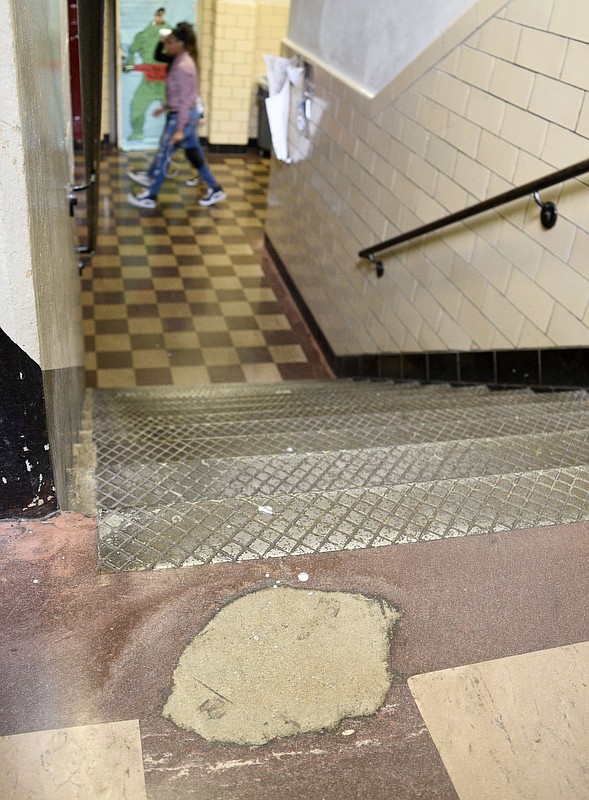Last summer, our community was shown a long-awaited efficiency consultant's report on Hamilton County's school buildings, and the finding was stunning: Our 74 public schools carried a $1.36 billion capital needs price tag.
Aside from the sticker shock, the report recommended closing 15 school buildings, renovating 11, adding to 10, and building three new ones from the ground up.
The resulting ground shaking didn't reverberate from the expected onslaught of bulldozers and earth movers - rather it came from community moms, dads and graduates jumping up and down in angst and protest.
Understandably - though not necessarily reasonably - the closures brought the loudest gasps.
So last week, after surveys and a series of public meetings around the county, the consultants released an updated, but still preliminary report. Suggested school closures fell from 15 to 11, and the capital needs price tag dropped from $1.36 billion to $869 million.
Here's a sampling:
* Brainerd High School students would move to a new building at the current Dalewood Middle School site to keep an existing community school in the Brainerd area. The current Brainerd High building would be replaced with a 1,300-student K-12 building to combine students from Barger Academy and the Chattanooga High Center for Creative Arts, a magnet school known as CCA.
The downside of this change to appease the community is that it does not offer a solution for two other magnet schools: the Chattanooga School for the Arts and Sciences, known as CSAS or the Chattanooga School for the Liberal Arts, known as CSLA, both of which were originally recommended to move into new or renovated spaces at Brainerd High and thus create a "magnet corridor" in the Brainerd community.
* Students from The Howard school would be rezoned to Lookout Valley Middle/High School and Lookout Valley Elementary and Lookout Mountain Elementary schools would be renovated rather than closed.
Though the Brainerd scenario may be the best example of community redesign and resident protest, there are other jarring changes in the new plan.
Truth be told, residents in all of these communities may well have been better served by taking a chill pill and letting the proposals marinate.
Suffice it to say, all of us at times let sentimentality (in this example, let's call it over-stretched community loyalty) get in the way of vision for our children's better tomorrow.
In the original plan, closing Brainerd High, Barger Academy, Clifton Hills Elementary and Dalewood Middle schools while rebuilding what school consultants called a magnet corridor across the community got lost on these neighborhoods that have already felt disenfranchised by changes since the 1960s. It seems that rather than being heartened by the idea of newer, stronger, more diverse magnet schools, the residents just heard that Brainerd High would be "closed."
Clinging to the past doesn't prevent loss, but refusing to grow ensures it.
Having an alma mater closed doesn't strip graduates of either the knowledge gained there or their community identity. (This writer can speak from experience, with her elementary and middle schools now closed, and her high school vanished. I am not diminished, and my community is better off, with far superior schools for our kids and grandkids.)
We're all invested in our communities, and because our sense of community is built largely around schools, we often have a visceral reaction when they are closed, repurposed or torn down. But our kids don't care which street their school is on or what it is called. They care about how their teacher receives them, and how they learn and play when the school bells ring.
The second shock - the sticker shock - even though it is lessening, is harder still to wrap our heads around. Our county commissioners last June rejected a school board budget calling for a $34 million-a-year operating revenue boost (the first in 14 years) that would have required a 34-cent property tax increase. This new 10-year schools building plan - even at the currently proposed $869 million - would require an even steeper property tax increase. Finding the political will for that among Hamilton County's less-than-stalwart elected officials is a steep ask.
We're in this very uncomfortable place because we've been here before and done nothing. Several times.
But doing nothing is not an option. Just as we cannot keep cooking in the same kitchen with appliances made five, six and seven decades ago (and with only the groceries we can buy today for the same money we had 14 years ago), our school teachers can't keep using only a blackboard to educate children who must complete school prepared to code workplace robots in today's tech jobs. It's no coincidence that local employers view only about 40% of our high school graduates as jobs-ready.
If we think it's hard to keep up with our schools' capital and operational needs today, think what it take in 10 more years when those employers give up on us and move their jobs to a county more invested in its schools.
